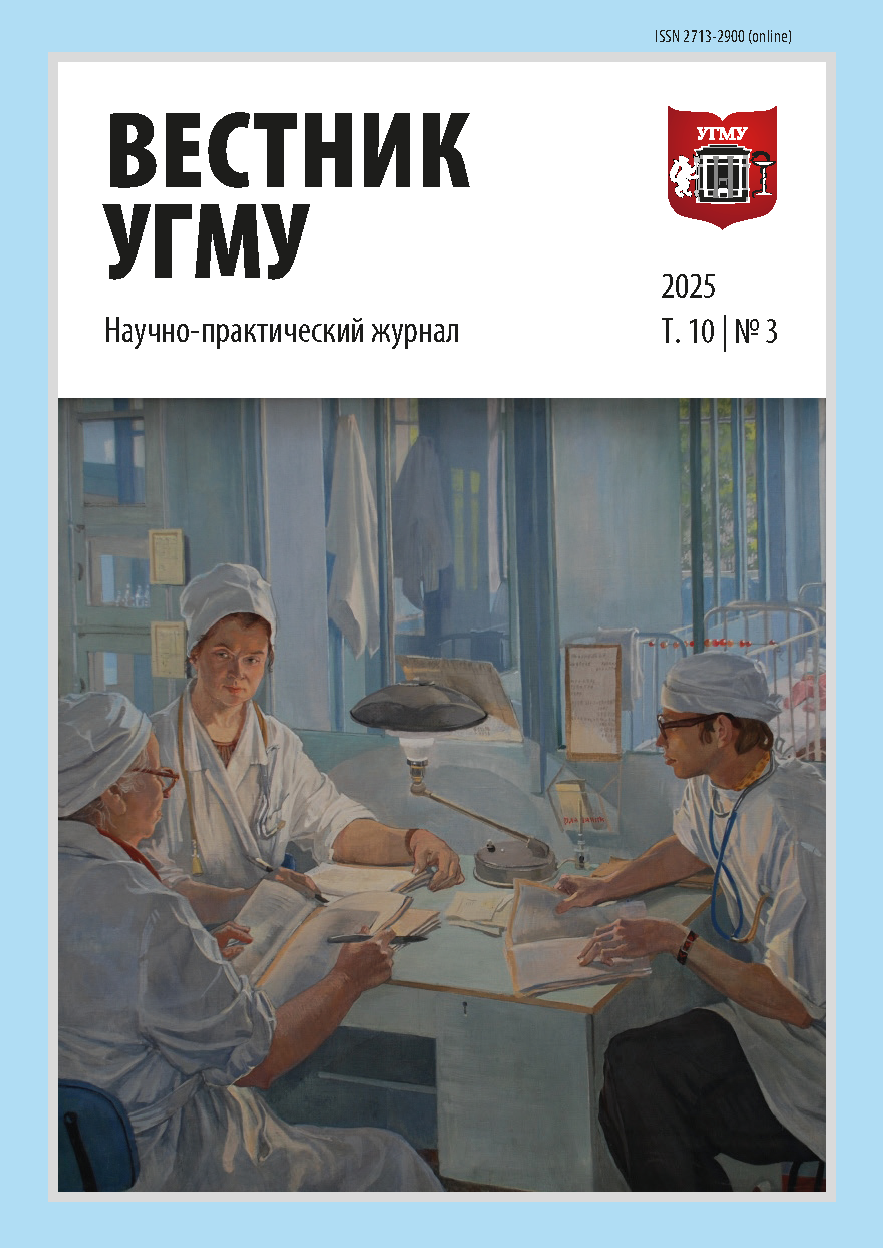Abstract
Introduction. Cryptorchidism or undescended testicle is one of the most common congenital malformations in male newborns. The incidence varies and depends on gestational age: 1.0–4.6 % in full-term and 1.1–45.0 % in premature infants. Surgical treatment should be started at the age of 6 months and should be completed by 12 or 18 months. The aim of this work is to analyze the causes of late diagnosis and surgical treatment of children with abdominal cryptorchidism (AC).
Materials and methods. During the period from 2020 to 2024, 699 children with cryptorchidism were treated in the Children’s City Clinical Hospital No. 9 Surgical Department No. 2. Impalpable testicle syndrome was detected in 105/699 (15 %) boys: 63/105 (60 %) — AC; 42/105 — (40 %) testicular regression syndrome. The patients were divided into 2 groups: I — boys were diagnosed with AC from birth (n = 52/63 (82.5 %)); II — AC was diagnosed at a later date, no malformation was detected at birth (n = 11/63 (17.5 %)).
Results and discussion. All children with an impalpable testicle underwent ultrasound examination of the scrotum, abdominal cavity and inguinal canals to visualize the gonad. Only after this examination were indications for surgical treatment established. Only 6/52 (11.5 %) boys from group I were treated at the recommended optimal age. In the group II, not a single child aged 6–18 months was operated on. Discrepancies between ultrasound data and the intraoperative picture were detected in 25/63 (39.6 %) cases, which could lead to later surgical treatment.
Conclusions. Optimization of diagnostic methods at all stages should begin with a complete objective examination of the child, including the external genitalia. Ultrasound screening of the scrotum and abdominal cavity in boys does not have absolute sensitivity, especially with non-palpable testicles.
For citation
Ekimov MN, Komarova SYu, Tsap NA, Gaidysheva EV, Timoshinov MYu, Smirnova SE. Causes of late diagnosis and surgical treatment of abdominal cryptorchidism in children. USMU Medical Bulletin. 2025;10(3):e00183. (In Russ.). DOI: https://doi.org/10.52420/usmumb.10.3.e00183. EDN: https://elibrary.ru/QQTHKA.
References
Skott M, Kennedy U, Gnech M, van Uitert A, Bujons A, Hoen L’, et al. European Association of Urology — European Society of Paediatric Urology guidelines on paediatric urology: Summary of 2024 updates. Part II. European Urology. 2025;88(2):190–203. DOI: https://doi.org/10.1016/j.eururo.2025.02.022.
Ulubay M. Perineal ectopic testis: A rare congenital anomaly. Urology Case Reports. 2019;24:100853. DOI: https://doi.org/10.1016/j.eucr.2019.100853.
Mah LW, Durbin-Johnson B, Kurzrock EA. Non-palpable testis: Is management consistent and objective. Journal of Pediatric Urology. 2020;16(1):62–68. DOI: https://doi.org/10.1016/j.jpurol.2019.11.015.
Аксельров МА, Сергиенко ТВ. Оценка результатов хирургического лечения детей с крипторхизмом. Вятский медицинский вестник. 2023;(3):4–7. [Akselrov MA, Sergienko TV. Evaluation of surgical treatment outcomes in children with cryptorchidism. Vyatka Medical Bulletin. 2023;(3):4–7. (In Russ.)]. DOI: https://doi.org/10.24412/2220-7880-2023-3-4-7.
Jiang DD, Acevedo AM, Bayne A, Austin JC, Seideman CA. Factors associated with delay in undescended testis referral. Journal of Pediatric Urology. 2019;15(4):380.e1–380.e6. DOI: https://doi.org/10.1016/j.jpurol.2019.03.029.
Vikraman J, Donath S, Hutson Ao JM. Undescended testes: Diagnosis and timely treatment in Australia (1995–2014). Australian Family Physician. 2017;46(3):152–158. PMID: https://pubmed.gov/28260279.
Leslie SW, Sajjad H, Villanueva CA. Cryptorchidism. In: StatPearls. Treasure Island: StatPearls Publishing. PMID: https://pubmed.gov/29261861.
Zhou W, Li S, Wang H, Zhou G, Wen J. Ultrasound manifestations and clinical features of nonpalpable testis in children. Scientific Reports. 2022;12(1):12245. DOI: https://doi.org/10.1038/s41598-022-16230-2.
Niedzielski JK, Oszukowska E, Słowikowska-Hilczer J. Undescended testis — current trends and guidelines: A review of the literature. Archives of Medical Science. 2016;12(3):667–677. DOI: https://doi.org/10.5114/aoms.2016.59940.
Mau EE, Leonard MP. Practical approach to evaluating testicular status in infants and children. Canadian Family Physician. 2017;63(6):432–435. PMID: https://pubmed.gov/28615391.
Екимов МН, Цап НА, Комарова СЮ. Синдром непальпируемого яичка: история и современное состояние вопроса. Обзор литературы. Детская хирургия. 2025;29(1):22–32. [Ekimov MN, Tsap NA, Komarova SYu. A syndrome of non-palpable testis: History and current state of art. Literature Review. Russian Journal of Pediatric Surgery. 2025;29(1):22–32.]. DOI: https://doi.org/10.17816/ps840.
This work is licensed under a Creative Commons Attribution-NonCommercial-ShareAlike 4.0 International License
Copyright © 2025 Ekimov M. N., Komarova S. Yu., Tsap N. A., Gaidysheva E. V., Timoshinov M. Yu., Smirnova S. E.






